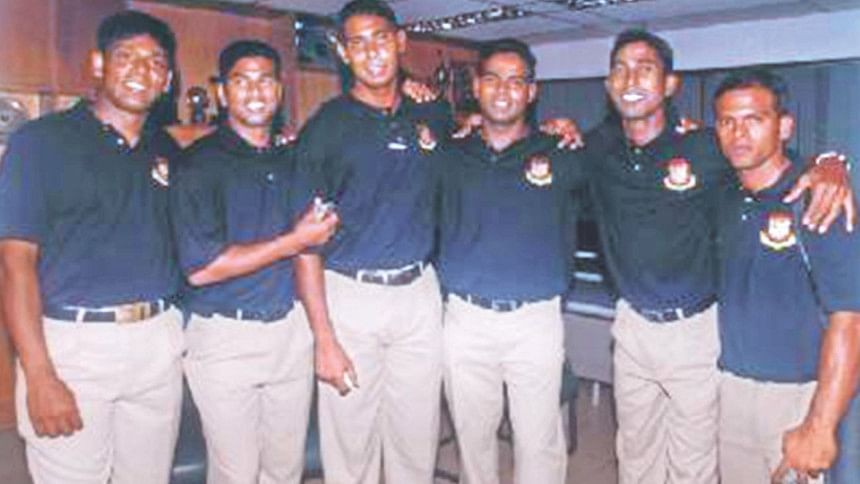A multifaceted dysfunction

A glance back through the pages of Bangladesh's Test history will reveal an inescapable reality -- the failure of the country's pacers in foreign conditions. Viewed through a historical lens, the insipid performance of the pacers in the recently concluded first Test in New Zealand is neither new nor surprising.
Bangladesh made their Test debut in November 2000 against India and since then the Tigers have played 113 Test matches, employing 39 different pacers -- four of whom were batsmen doing a bit of part-time seam-up bowling. The average of Bangladeshi quicks, home and away, stands at an appalling 57.25 -- comfortably the worst among the 10 Test nations over the period. The 37 Zimbabwean pacers in the country's 62 Test matches in that time have averaged 39.84 -- the next worst but still leagues better than Bangladesh. The average for Bangladeshi pacers away from home is 58.40 -- also the worst.
Bangladesh's mentality of banking on spinners and making spin-friendly wickets at home to yield positive results in Tests could also be blamed for the pacers' mediocrity over the years. The scenario is much the same in domestic cricket. Since Bangladesh have made their Test debut, only India -- another country that traditionally relied on spinners -- have played 35 pacers in Tests, while teams like Australia, South Africa, New Zealand and England have employed 48, 43, 43 and 59 pacers respectively over that period.

A few instances could be brought to the fore to provide a glimpse into Bangladesh's reluctance to use pacers in home Tests. As recently as November 2018, Bangladesh opted to take the field without a single pacer and with a spin quartet comprising Shakib Al Hasan, Mehedi Hasan Miraz, Taijul Islam and Nayeem Hasan in the second Test against West Indies in Mirpur. This over-dependence on spinners may bring success at home but at a cost -- Bangladesh's meek surrenders while playing away, with a toothless pace attack often being the common factor.
It was Mehedi who scalped 12 wickets during Bangladesh's first-ever Test triumph against England in Mirpur in October 2016. In August of the following year, Bangladesh won by 20 runs against Australia at the same venue and this time it was Shakib's 10-for that made the difference. Over the two games the three specialist spinners -- Shakib, Mehedi and Taijul -- had bowled 235.4 overs while three pacers -- Kamrul Islam, Shafiul Islam and Mustafizur Rahman -- only bowled a combined 18 overs.
The aforementioned triumphs clearly show how heavily Bangladesh rely on spinners at home and while they have brought successes, the same cannot be expected of the pacers whose opportunities to hone their craft at home are severely limited by the number of overs and matches on offer for the faster men, resulting in them looking like ducks out of water on friendly pitches abroad.
Bangladesh could be said to have a stable batting unit as four of Bangladesh's Big Five -- Tamim Iqbal, Mushfiqur Rahim, Mahmudullah Riyad and Shakib Al Hasan -- who form the core, have played together in 29 Test matches since 2009. However, such cannot be said of the bowling unit as Bangladesh have seen 22 different pacers over that same period. It does not help, of course, that the other member of the Big Five and possibly the best pacer Bangladesh has produced -- Mashrafe Bin Mortaza -- quit playing the longer version because of chronic knee problems, playing the last of his 36 Tests in 2009.
It was recently mentioned by Bangladesh's bowling coach Courtney Walsh that the decision-makers need to be patient and not shuffle pacers frequently, which has been the case so far. If we consider the Bangladesh's ongoing New Zealand tour, they are using a completely different set of pacers to the unit taken to the country in 2016-17 -- the Tigers' last tour of New Zealand.

The exclusion from the Test squad of Rubel Hossain, who has played 26 Tests -- more than the incumbent group of Mustafizur, Ebadot Hossain, Abu Jayed and Khaled Ahmed combined -- illustrates the point raised by Walsh. There have been previous instances of discontinuity. An example is Robiul Islam, who shone during the Zimbabwe tour in 2013, scalping 15 wickets in two Test matches and winning the player-of-the-series award. Robiul played the last of his nine Tests a year later against West Indies in Gros Islet, with fitness problems offered as a reason for his disappearance.
There is no one factor to point the finger of blame at when trying to explain Bangladesh's pace poverty. For a young Test nation, wins are important -- hence the over-reliance of spin at home. Bowlers like Robiul passing quietly into the night have as much to do with individual initiative as systemic problems. However, if Bangladesh do aspire to rise above the bottom of the Test table, it is the system that discourages pace bowling that has to change.

 For all latest news, follow The Daily Star's Google News channel.
For all latest news, follow The Daily Star's Google News channel. 






Comments